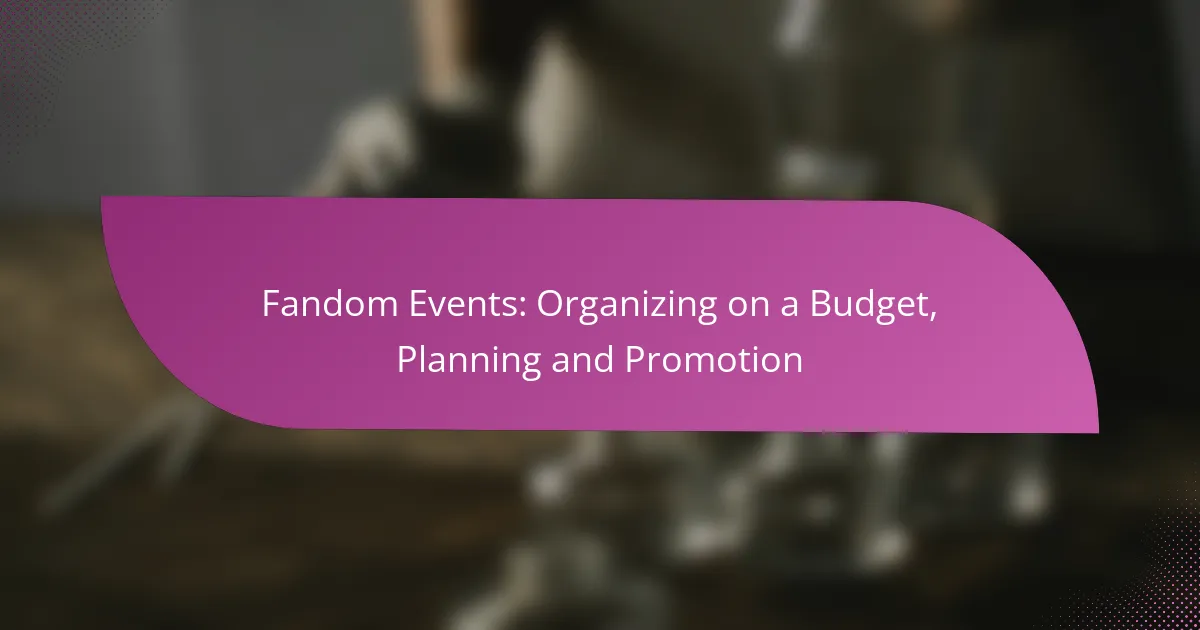Organizing fandom events on a budget can be both rewarding and challenging, requiring thoughtful planning and creativity. By implementing cost-effective strategies for promotion and resource management, you can create memorable experiences that resonate with attendees while keeping expenses in check. Careful consideration of each planning step, from defining the event’s purpose to securing vendors, is essential for a successful gathering.
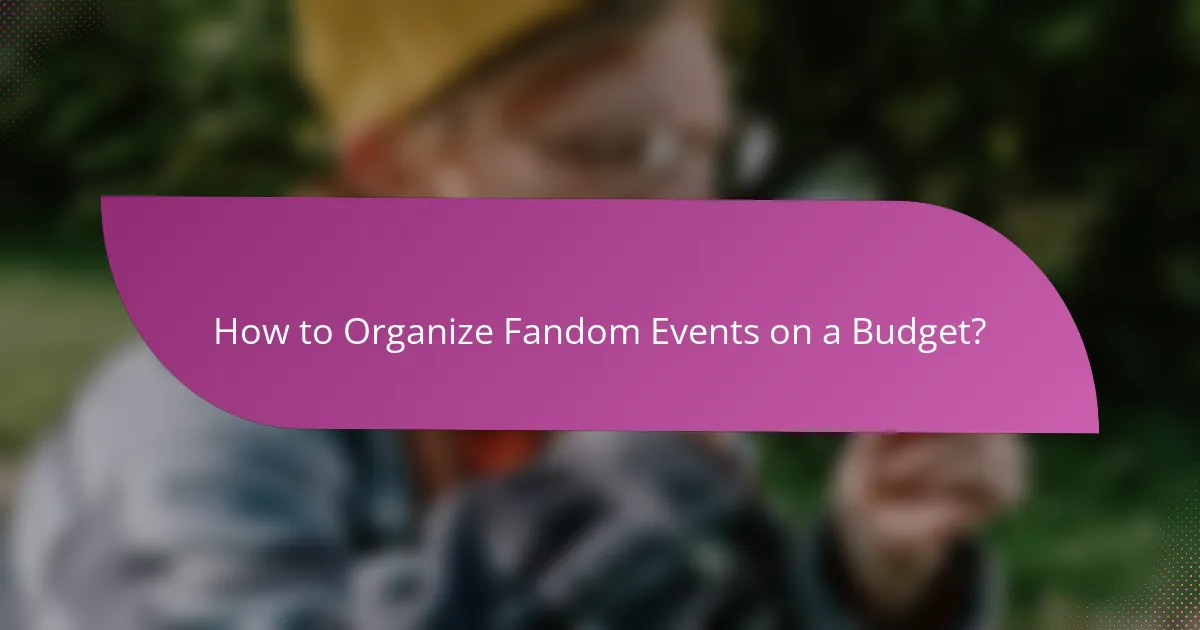
How to Organize Fandom Events on a Budget?
Organizing fandom events on a budget requires strategic planning and resourcefulness. By focusing on cost-effective solutions, you can create engaging experiences without overspending.
Utilize free venues
Finding free venues is a crucial step in budget-friendly event planning. Consider local parks, community centers, or libraries that may offer space at no cost. Always check for any necessary permits or regulations that may apply.
Additionally, hosting events in public spaces can attract a larger audience, as these locations are often more accessible. Just ensure that the venue aligns with the theme of your event to enhance the overall experience.
Leverage community partnerships
Building partnerships with local businesses and organizations can significantly reduce costs. Approach nearby shops or cafes for sponsorships or in-kind donations, such as food, drinks, or promotional items.
Collaborating with other fandom groups can also help share resources and reach a wider audience. Joint events can create a more vibrant atmosphere and distribute costs among multiple parties.
Implement DIY decorations
Creating your own decorations can save money while adding a personal touch to your event. Use materials like cardboard, fabric, or recycled items to craft themed decor that resonates with your fandom.
Organize crafting sessions with volunteers to engage your community and generate excitement. This not only reduces expenses but also fosters a sense of ownership among participants.
Offer volunteer opportunities
Inviting volunteers to help with your event can significantly cut labor costs. Reach out to local fandom groups or social media platforms to find individuals eager to contribute their time and skills.
In exchange for their help, offer volunteers perks such as free admission, exclusive merchandise, or recognition during the event. This creates a win-win situation that enhances community involvement.
Use social media for promotion
Social media is a powerful tool for promoting your event without incurring high costs. Create event pages on platforms like Facebook or Instagram to share updates, engage with attendees, and build excitement.
Utilize hashtags related to your fandom to reach a broader audience and encourage attendees to share their experiences online. Engaging content, such as countdowns or sneak peeks, can help maintain interest leading up to the event.
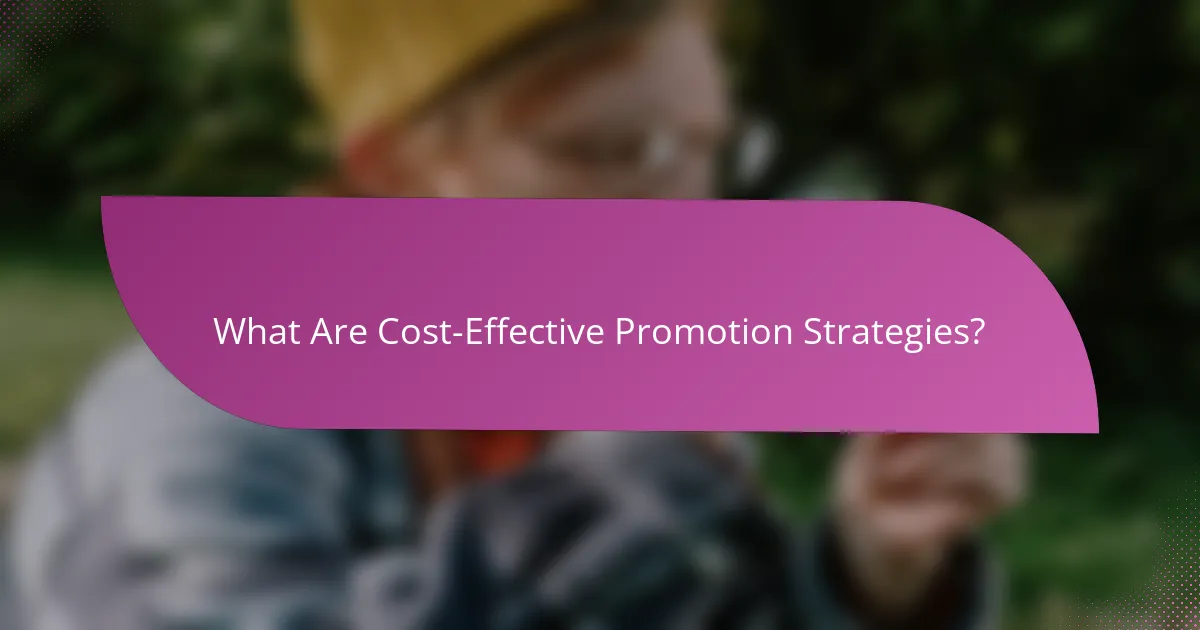
What Are Cost-Effective Promotion Strategies?
Cost-effective promotion strategies are methods that maximize visibility and engagement for fandom events while minimizing expenses. These strategies leverage local resources, digital platforms, and community connections to reach the target audience efficiently.
Engage local influencers
Local influencers can significantly amplify your event’s reach at a low cost. By partnering with individuals who have a strong following in your community, you can tap into their audience and generate buzz around your event.
To engage local influencers, identify those who align with your fandom’s interests and values. Reach out with a clear proposal that outlines mutual benefits, such as free tickets or exclusive access to event content.
Use targeted social media ads
Targeted social media ads allow you to reach specific demographics without overspending. Platforms like Facebook and Instagram offer tools to narrow your audience based on interests, location, and behavior.
Set a modest budget and experiment with different ad formats, such as image or video ads. Monitor performance metrics to adjust your strategy and focus on ads that yield the best engagement rates.
Create event-specific hashtags
Event-specific hashtags can help consolidate conversations and increase visibility on social media. By creating a unique hashtag, you encourage attendees to share their experiences and promote your event organically.
Make sure the hashtag is easy to remember and relevant to your event. Promote it across all your marketing materials, and consider incentivizing its use with contests or giveaways to boost participation.
Collaborate with fandom groups
Collaborating with existing fandom groups can enhance your promotional efforts and expand your audience. These groups often have established networks and can help spread the word about your event.
Reach out to local clubs, online forums, or social media groups related to your fandom. Propose cross-promotional opportunities, such as co-hosting events or sharing each other’s content to maximize exposure.
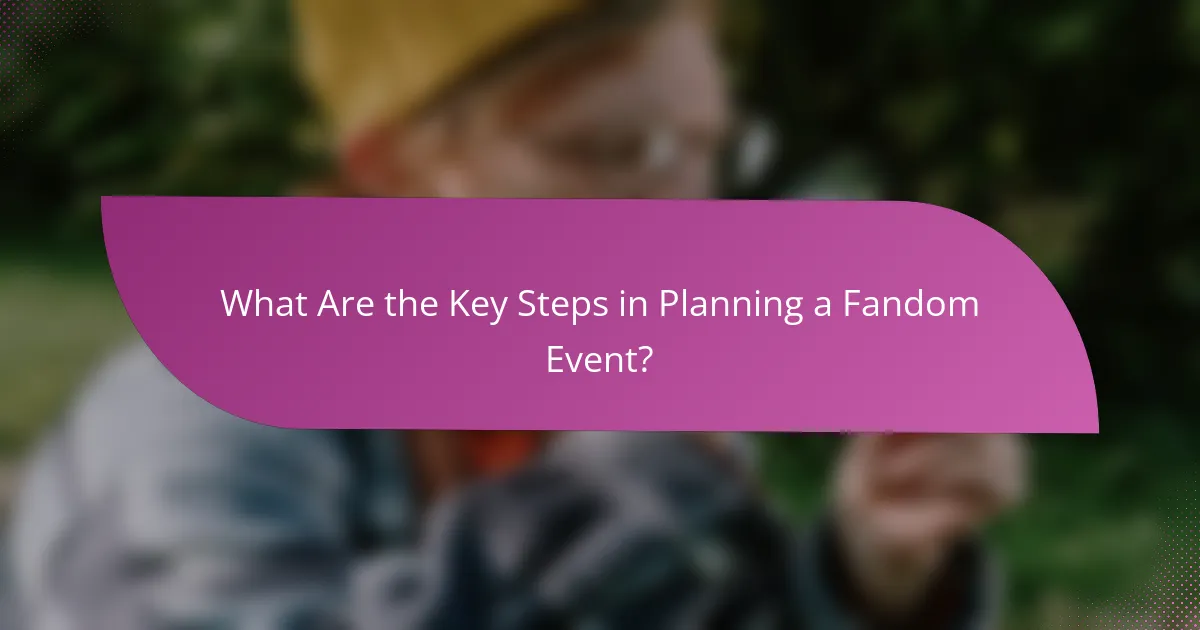
What Are the Key Steps in Planning a Fandom Event?
Planning a fandom event involves several key steps that ensure its success, including defining the purpose, setting a budget, choosing a date, and booking vendors. Each step requires careful consideration to create an engaging and memorable experience for attendees.
Define the event’s purpose
Clearly defining the event’s purpose is crucial as it guides all subsequent planning decisions. Whether the goal is to celebrate a specific fandom, raise funds for a cause, or foster community engagement, having a clear objective helps in tailoring the event’s activities and promotions.
Consider the interests of your target audience when establishing the purpose. For example, a convention might focus on panels and workshops, while a smaller gathering could emphasize social activities and networking opportunities.
Set a budget and timeline
Establishing a budget is essential for managing expenses and ensuring the event remains financially viable. Start by listing all potential costs, including venue rental, marketing, supplies, and vendor fees, and aim for a budget that allows for some flexibility.
Creating a timeline helps keep the planning process on track. Outline key milestones, such as securing a venue and finalizing vendor contracts, and set deadlines to ensure all tasks are completed in a timely manner. A typical planning timeline might span several months, depending on the event’s scale.
Choose a suitable date
Selecting a suitable date is vital to maximize attendance and avoid conflicts with other events. Research local calendars for holidays, conventions, or major events that could affect your audience’s availability.
Consider seasonal factors as well; for instance, summer months may attract more attendees for outdoor events, while winter might be better for indoor gatherings. Aim for a date that provides ample time for promotion and preparation.
Book necessary vendors
Booking vendors is a critical step in ensuring the event runs smoothly. Identify the types of vendors needed, such as catering, audio-visual support, or merchandise sellers, and start reaching out early to secure their services.
When selecting vendors, consider their experience with fandom events and check references or reviews. Comparing quotes from multiple vendors can also help you stay within budget while ensuring quality services. Aim to finalize vendor contracts at least a month before the event to avoid last-minute issues.
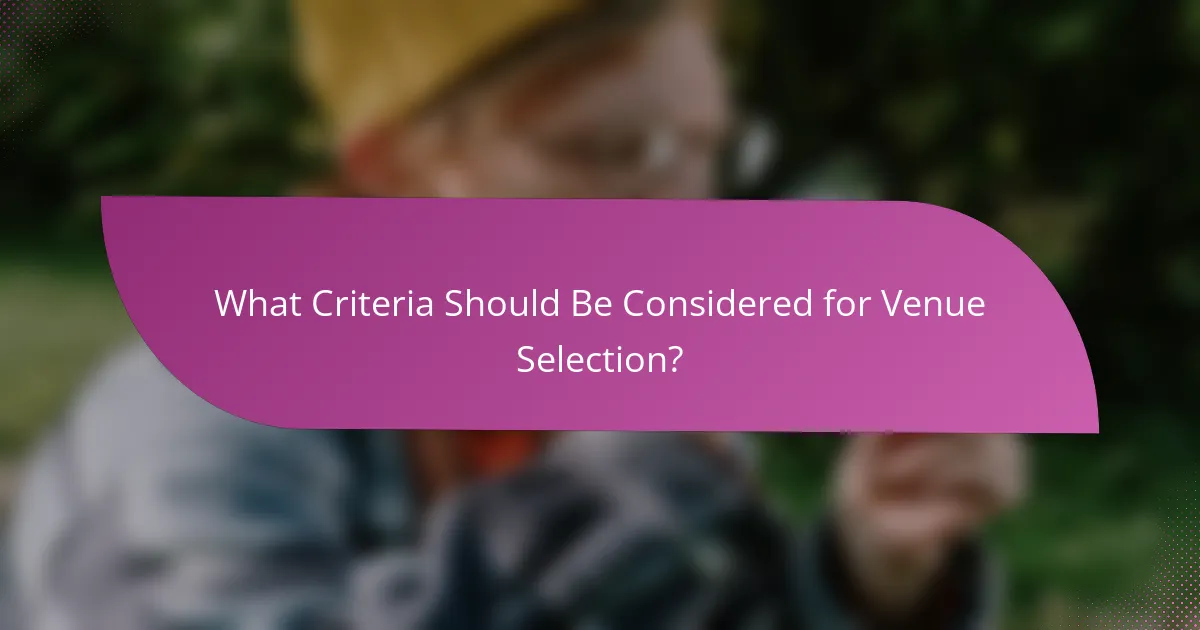
What Criteria Should Be Considered for Venue Selection?
When selecting a venue for fandom events, consider factors such as accessibility, capacity, layout, and location. These elements significantly impact attendee experience and overall event success.
Accessibility for attendees
Accessibility is crucial for ensuring all attendees can participate comfortably. Look for venues that comply with local regulations regarding accessibility, such as wheelchair ramps, elevators, and accessible restrooms.
Additionally, consider the venue’s proximity to public transportation and parking options. Venues located near major transit hubs can enhance attendance, especially for those traveling from afar.
Capacity and layout
Capacity refers to the maximum number of attendees a venue can accommodate, which should align with your expected turnout. Choose a space that comfortably fits your audience while allowing for movement and interaction.
The layout of the venue is equally important. An open floor plan can facilitate mingling and activities, while designated areas for panels or workshops can enhance engagement. Assess the venue’s flexibility to rearrange seating or create distinct zones for different event activities.
